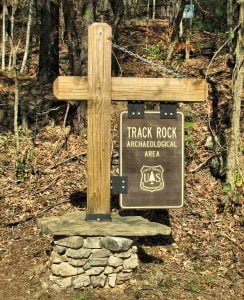Interpretation of the Track Rock Gap Petroglyphs
As a major portion of its professional services to the U.S. Forest Service in the year 2000, Stratum Unlimited, LLC prepared graytone renderings of the six main boulders at Track Rock Gap. These renderings will be of incalculable value to the citizens of the United States in the future. Because they remained exposed to the elements, the petroglyphs deteriorated at an accelerating pace in the early 21st century. Acidic rainwater is the primary culprit. The renderings of the Track Rock petroglyphs are presented on a website sponsored by the USFS. Johannes Loubser provided only generalized interpretation of the images on … Read more

